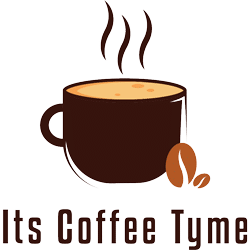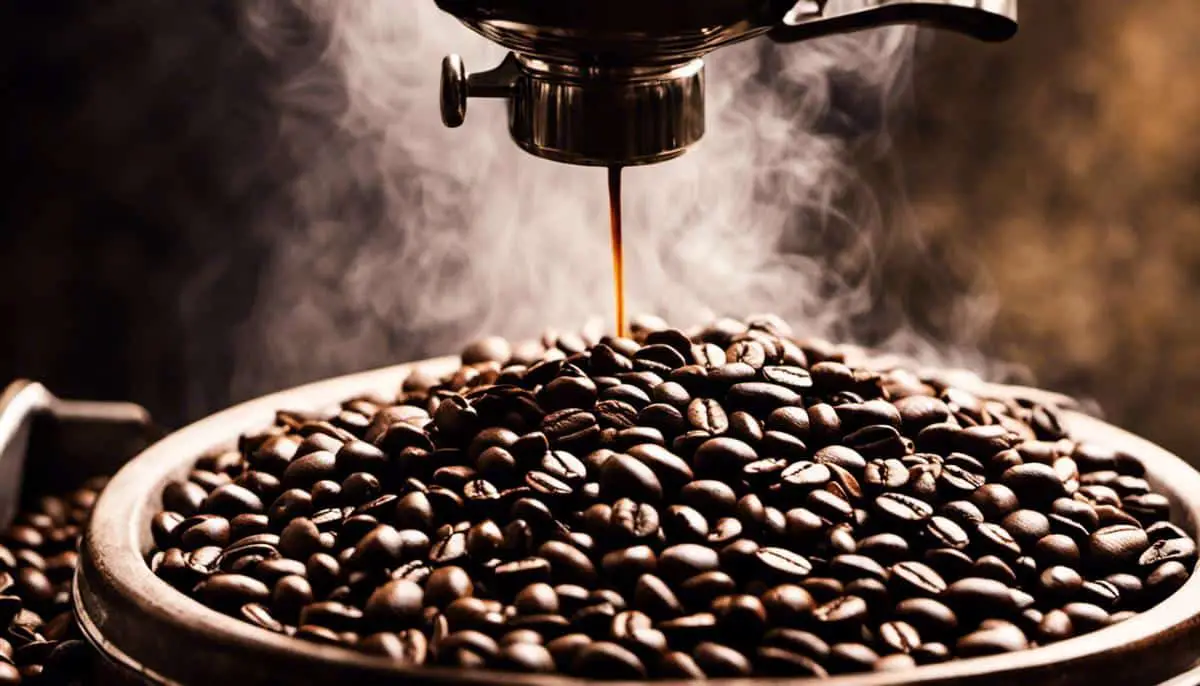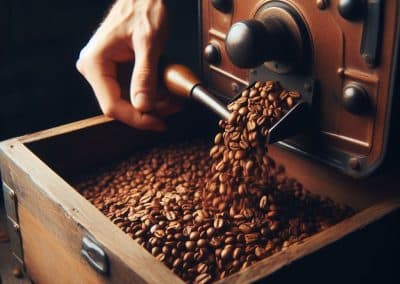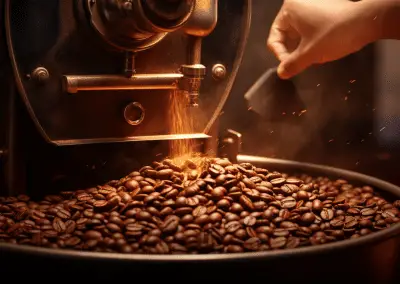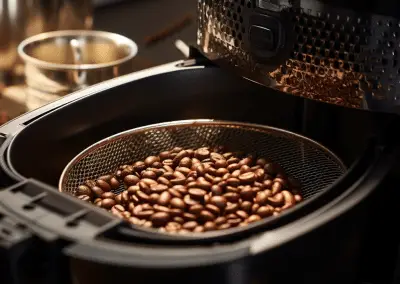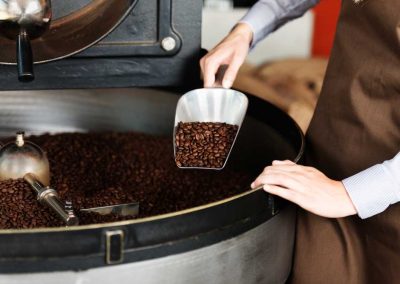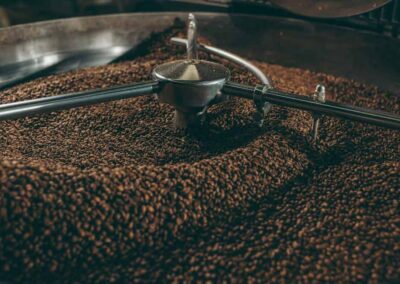Unveiling the World of Coffee Roasting. The remarkable journey of coffee beans, from their unassuming green origins to the intricate depths of the dark roasted marvels in our cups, is a sensorial voyage filled with discovery, craft, and delight. At the heart of this transformation is coffee roasting — a science as much as it is an art, a journey as essential to the final brew as the bean itself. This exploration offers a comprehensive window into the captivating world of coffee roasting — dissecting its artistry, shedding light on the mysteries of selecting the perfect beans, the intrigue of roasting profiles, and extending the conversation beyond roasting, into brewing and tasting.
Understanding the Basics of Coffee Roasting
The aroma of freshly roasted coffee beans, the enticing crackle they make as they turn a golden hue, the sheer pleasure of indulging in a sip of a brew born from them. For the devoted coffee enthusiasts, delving into the world of coffee roasting can be a tantalizing journey. The conscious process of transforming raw green coffee beans into the cherished brown beans we crave is fascinating.
The core principle behind coffee roasting lies in the understanding that it’s a metamorphosis, a process of bringing the unique characteristics of every coffee bean to bloom. Each bean holds a world of flavors and aromas within it that await release through careful heat application. Essentially, the aim is to take these green wonders and, using temperature and time, unleash the enticing, sensory delight we know as coffee.
Understanding that different beans require tailored roasting profiles is crucial. There’s no absolute right or wrong in roasting, but rather a series of decisions based on desired flavor outcome. The roast level affects how the beans taste, with light roasts emphasizing the natural flavors of the bean and dark roasts more about the flavor of the roasting process.
Let’s walk through some fundamental techniques of coffee roasting.
First, preheating is a must.
Always ensure the roaster is adequately preheated before adding the beans. The correct initial temperature is usually between 370°F – 540°F, depending on the chosen roasting method.
Once the beans are in the roaster, one must be vigilant as temperature readings determine the entire roasting process. Attention to ‘first crack’ is essential– the point at which the beans begin to expand and crack, usually occurring between 380°F to 410°F. This vital auditory cue marks the transition from light to medium roast.
Beyond the first crack, distinguishing the subtle indicators from the beans that reveal their flavors becomes an art. It’s the roaster’s job to understand these messages, employing their senses to control the heat, timing, and progression of the roast.
Second Crack is another auditory indicator when the beans move to a darker roast, usually falling around 430°F – 450°F. After this phase, the oils begin to seep out, giving the beans a glossy look and, if continued, might result in a burnt flavor.
Understanding and controlling these stages is where the breadth of skill in coffee roasting is revealed. Mastering the delicate balance between heat, air, and time can indeed be challenging, but it’s undeniably rewarding as each batch of beans offers a new world of flavors to explore.
Remember, coffee roasting isn’t just about technique, nor solely science – it’s a journey of all your senses. It invites you to explore, to experiment, and to savor. It encourages learning and passion for capturing that perfect, sumptuous cup of coffee. So enjoy the journey, embrace each experience and, above all, let the aroma of the beans guide you. The world of coffee roasting is waiting. Discover its wonders and unwrap a true coffee experience. Happy roasting, folks!
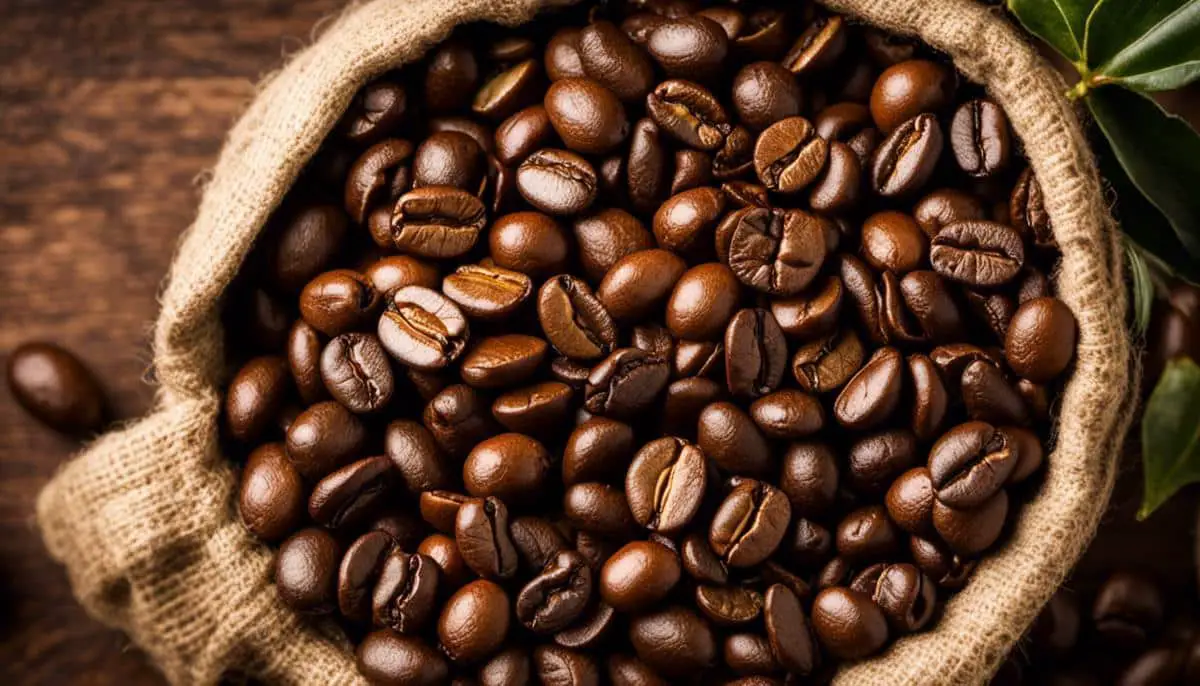
The Art of Selecting Coffee Beans
The Essential Guide to Choosing the Perfect Coffee Beans for Roasting
Just like the creation of a beautiful painting, the process of coffee roasting requires the perfect canvas: the coffee beans. Therefore, choosing the right beans is absolutely crucial in shaping your overall coffee experience. The right bean variety that matches your flavor preferences, the quality of the beans, and the source region – these factors all significantly influence the final product.
Bean Varieties and Flavor Profiles
The world of coffee offers an abundance of bean species, but the two most common are Arabica and Robusta. Arabica beans are generally characterized by a mellow and sweet taste, making them a favorite amongst gourmet and specialty coffee roasters. They create a smooth cup with bright acidity, lighter body, and nuanced flavors. These beans grow primarily in Africa and South America.
On the other hand, Robusta beans pack a punch, flavor-wise. With a more robust flavor and a hint of chocolate and nuts, these beans give a heartier cup of coffee with plenty of body, a robust aroma, and higher caffeine content. They are primarily cultivated in Vietnam and Indonesia. Therefore, your flavor preference is a fundamental guide in choosing between these two.
Quality Matters
An equally important factor in choosing the perfect beans for roasting is their quality. Specialty beans are higher quality and will likely deliver more satisfying taste profiles and will roast more evenly due to their genetic superiority and meticulous harvesting and processing methods. The grading given by professional tasters called Q-graders can also be a guideline to indicate quality.
Origin Story – The Soil, Altitude and Climate
Coffee beans are the seeds of a fruit, commonly referred to as a coffee cherry. The conditions in which this fruit grows manifest in the flavor of the coffee—just like wine grapes. So, paying attention to where and how your coffee is grown can offer exciting opportunities to explore diverse taste experiences. For instance, Ethiopian coffee boasts floral, fruity notes while the bold, rich flavor is a trademark of Sumatran coffee.
Quite importantly, altitude affects coffee profiles, too. Coffee grown at higher elevations is often described as being cleaner, sweeter, and brighter than coffee grown at lower elevations.
Buy Fresh, Buy Green
Lastly, when buying beans for roasting, it’s recommended to get green coffee. While roasted coffee starts losing its flavors over just a few weeks, green beans can be stored for extended periods without any loss in quality or potential for excellent taste.
It’s also preferable to buy from vendors who are committed to fair-trade and sustainable practices. This not only ensures ethical source but also higher quality as such vendors tend to favor species diversity and organic farming practices.
Choosing the perfect beans for coffee roasting is indeed an art. It’s a delightful exploration of flavors and profiles, dictated by personal preference, quality, origin and other factors. So, take a step into this exciting world and ignite your coffee roasting journey now!
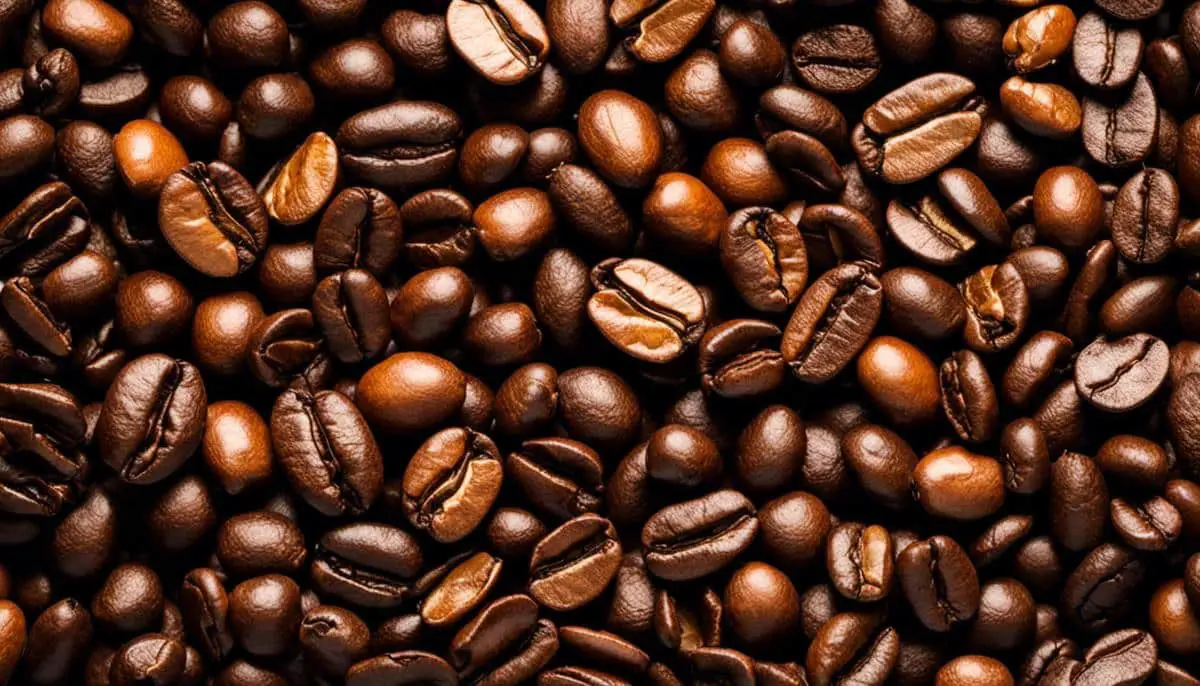
Decoding Roasting Profiles
Roasting profiles represent a sort of roadmap that guides the coffee roasting journey. Each profile significantly impacts how a coffee will ultimately taste, tampering with a wide range of factors including acidity, sweetness, and body.
Let’s deep dive into the exciting world of bean varieties. Primarily, there are two types of coffee beans, Arabica and Robusta. Arabica beans are popular for their smooth, delicately acidic flavor and are often used in gourmet and specialty blends. In contrast, Robusta beans, though less favored due to their strong, often bitter flavor, contain a higher caffeine content and significantly contribute to espresso blends’ hearty taste and crema.
Profoundly affecting taste, the quality of coffee beans and the grading guidelines are another significant factor. The highest quality beans are often marked as “Specialty” and follow strict grading regulations considering size, shape, color, and defects. These Specialty beans tend to carry unique flavors and characteristics that contribute to the resulting roast’s distinct profile.
Origin has a massive influence on the flavor of coffee. Factors such as soil, altitude, and climate determine the taste, aroma, and feel of the coffee. For instance, beans grown in rich volcanic soils often showcase a well-rounded acidity and a hint of spice or chocolate. High-altitude beans are generally denser and yield a more acidic, flavorful cup. While, low-altitude beans often produce a softer, milder coffee.
Buying green coffee beans is crucial for anyone eager to experiment with roasting profiles. As roasters, we get transcendental joy from transforming these raw, lifeless-looking beans into intensely fragrant experience bombs. It’s not hyperbole to say that the type and quality of green beans you source will shape the outcome of your entire roasting journey.
An oft-overlooked aspect of buying coffee is ethical sourcing and sustainability. The harsh reality is that coffee farming is often characterized by poverty, exploitation, and environmental degradation. As responsible coffee roasters, we have the power to choose ethically sourced, sustainably grown beans. This not only finds the balance between our love for coffee and social responsibility, but often leads to better tasting coffee due to the special care and attention given by growers to sustainable crops.
The lesson here? Understanding roasting profiles requires a good grasp on numerous elements involved in the process—from bean variety, grading standards, and origin influence, to quality of green beans, and ethical sourcing. It’s a passionate pursuit, an ongoing adventure in the vast universe of coffee. There’s no end to the learning process—just unending exploration and unbounded delight in each new discovery. Happy roasting!
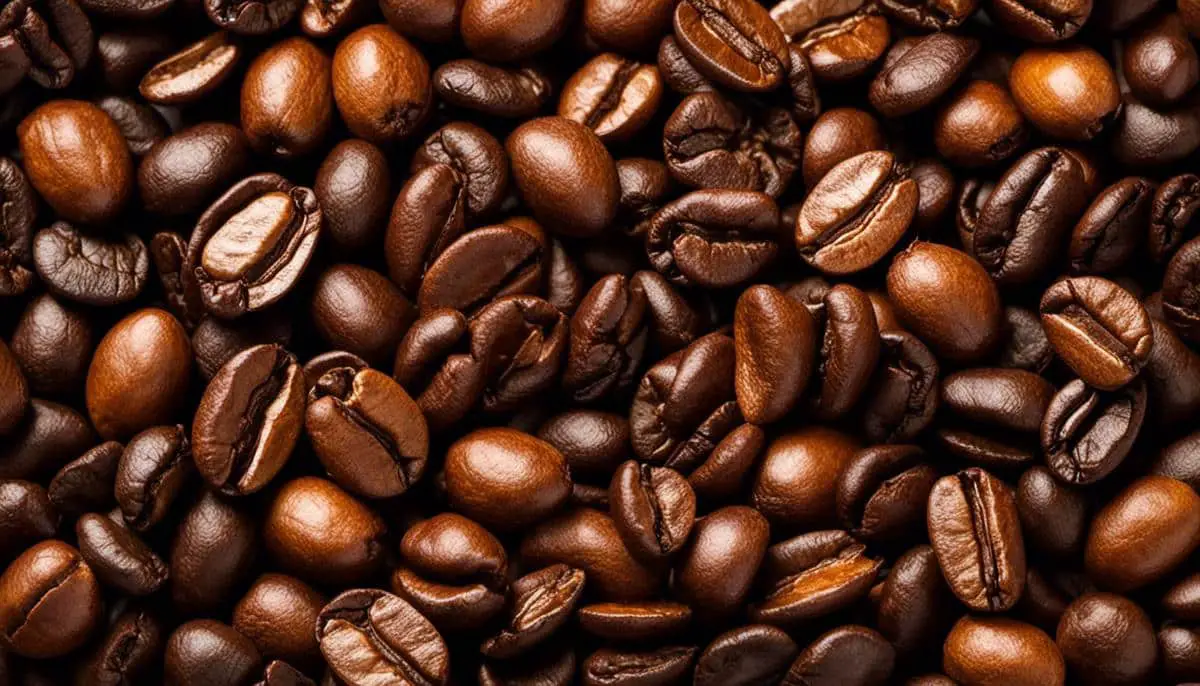
Beyond Roasting: Brewing and Tasting
Once the meticulous process of coffee roasting has been done and the anticipation has built up, it’s time to reveal, enjoy, and evaluate the results of your labor – the tasting or cupping process. This vital step is where you truly encounter the magical transformation your coffee beans have undergone. To facilitate this, we will cover the principles of brewing and tasting, which bring out the best in your roast.
Let’s begin with coffee grinding which is an art in its own right. It’s crucial to achieve the right grind size. Too coarse and your brew may taste weak due to undersaturation. Conversely, a too-fine grind can result in over-extraction and generate an undesirably bitter taste. Visual identification of the proper grind size, experimentation, and consistent refinement are the keys to success in this area.
Moving on, never underestimate the significance of the water-coffee ratio. A commonly accepted universal guideline is the “Golden Ratio” – 1 to 2 tablespoons of ground coffee for every six ounces of water. However, it’s encouraged to play around and find a ratio that is the most appealing to your palate.
Water quality and temperature also play a significant role. Purified water is ideal, as water with too many impurities or minerals can cause discoloration and also alter the taste. The optimal water temperature, according to the National Coffee Association, is between 195 to 205 degrees Fahrenheit. Any hotter can lead to over-extraction, and anything lower might not extract enough flavor.
Next comes the brewing method. From the traditional French Press, the expedient Drip Coffee machines, to the increasingly popular AeroPress, each has its own unique impression on the final cup. Experimenting with different methods can yield fascinating nuances to your home-roast venture.
Now, to the tasting or “cupping.” This is where the true beauty of your effort unfurls. Pour a bit of coffee into a cup and slurp it – yes, slurp, don’t sip. This distributes the coffee across your palate, hitting all taste sensation areas. Now, assess the flavors. Do they align with the profile you anticipated from the bean variety, origin, and roast? Note the body (or how the coffee feels in your mouth), acidity, sweetness, bitterness, and aftertaste. Consider each part of the experience and enjoy each sip.
Brewing and tasting coffee are every bit as important as selecting your beans and perfecting your roasting technique. Treat each step as an integral part of your coffee journey. Even the smallest adjustments in brewing and tasting can create vast differences in your final cup, which is what makes coffee an exciting world to explore.
Combining art, science, and a hint of magic, the realm of coffee roasting and tasting is an evolving sphere of gratification for all senses. It’s more than just a go-to morning energizer or a feared insomniac feed; it’s an immersive sensory experience everyone passionate about coffee should explore. Immerse yourself in this world. The beauty of it – there are no wrong choices, only discoveries and personal preferences.
So, dive into more brewing methods, finetuned cupping steps, and enjoy the infinitely delightful aspect of coffee roasting and tasting. Let the romance of the aroma, the allure of the taste, and the sophistication of the process make each cup a testament to your love for coffee. Keep roasting, keep tasting, keep enjoying!
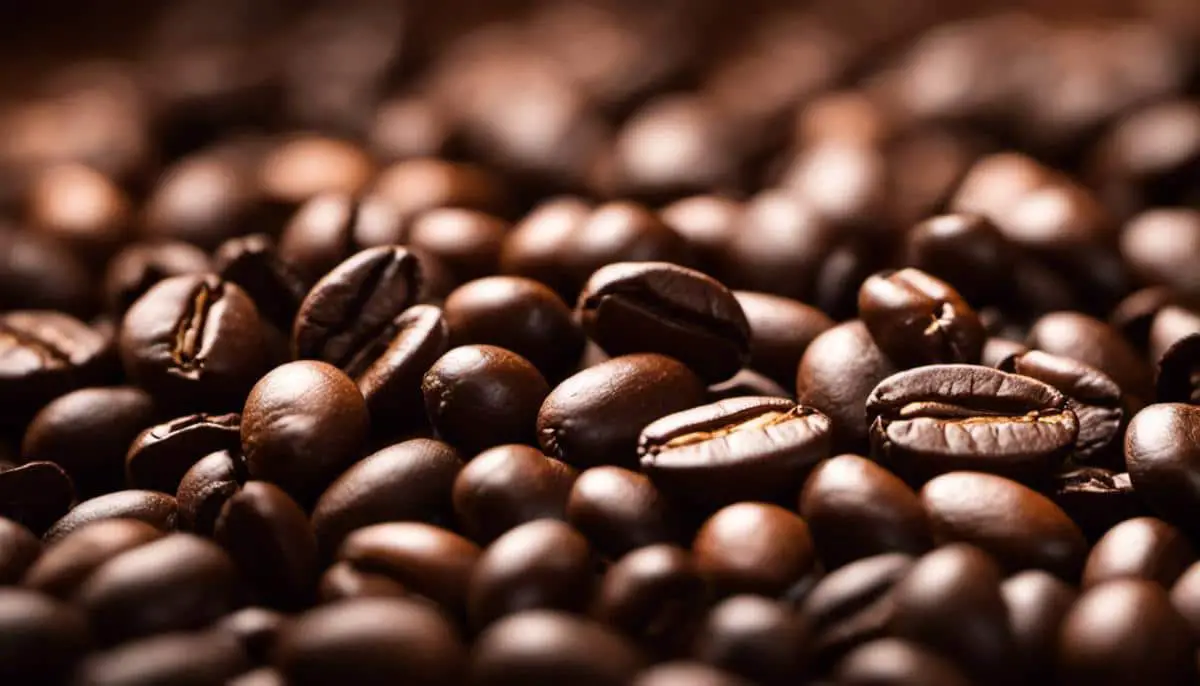
What begins as a deep dive into the fundamentals of coffee roasting tapers into a nuanced exploration of the factors that influence the flavors and aromas in a cup of coffee. The artistry involved in selecting the finest coffee beans, coupled with the craft of developing precise roasting profiles, culminates in that defining moment when a well-roasted bean meets its brewing destiny. Whether you’re a coffee connoisseur or a novice estimator, the act of brewing and tasting your own perfectly roasted coffee is a profound achievement that punctuates the journey that is coffee roasting. This exploration is not merely about becoming informed — it’s about fostering an enduring appreciation for the entire process, with the final sip serving as a testament to the art and science of coffee roasting.
